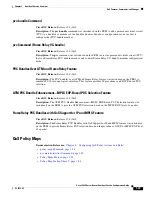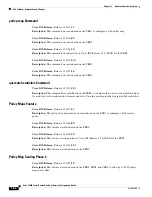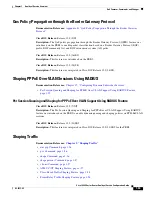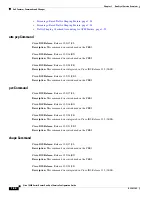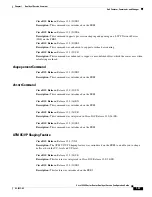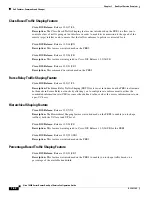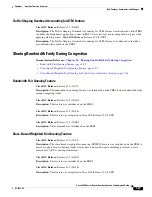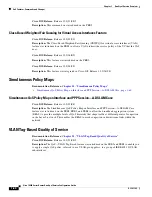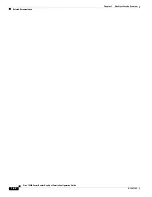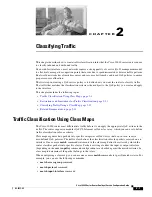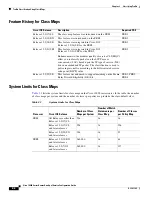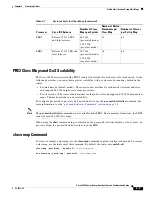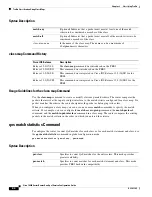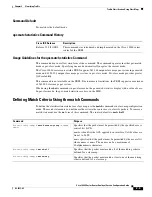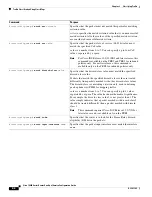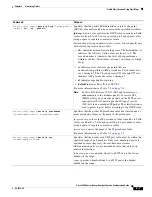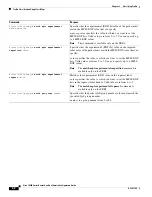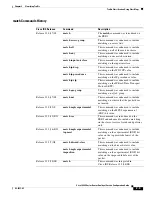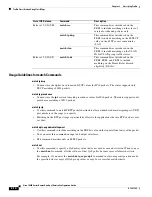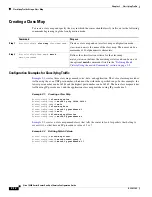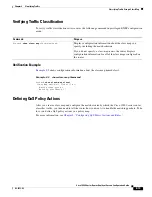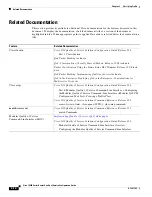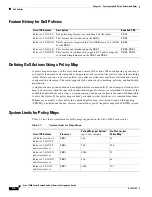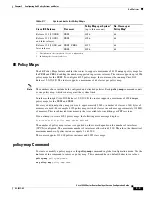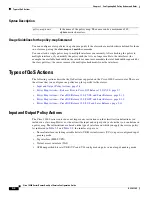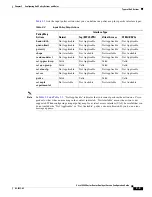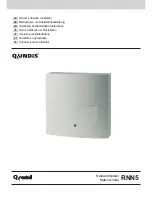
2-4
Cisco 10000 Series Router Quality of Service Configuration Guide
OL-7433-09
Chapter 2 Classifying Traffic
Traffic Classification Using Class Maps
Syntax Description
class-map Command History
Usage Guidelines for the class-map Command
Use the
class-map
command to create or modify class map match criteria. The router compares the
packets that arrive at the input or output interface to the match criteria configured for a class map. If a
packet matches the criteria, the router designates the packet as belonging to the class.
When you configure a class map, you can use one or more
match
commands to specify the match
criteria. For example, you can configure the
match access-group
command, the
match protocol
command, and the
match input-interface
command in a class map. The router compares the arriving
packets to the match criteria in the order in which you entered the criteria.
qos match statistics Command
To configure the router to count QoS matches for each class or for each match statement and class, use
the
qos match statistics
command in global configuration mode.
qos match statistics
{
per-class
|
per-match
}
Syntax Description
match-any
(Optional) Indicates that a packet must meet at least one of the match
criteria to be considered a member of the class.
match-all
(Optional) Indicates that a packet must meet all of the match criteria to be
considered a member of the class.
class-map-name
Is the name of the class map. The name can be a maximum of
40 alphanumeric characters.
Cisco IOS Release
Description
Release 12.0(17)SL
The
class-map
command was introduced on the PRE1.
Release 12.0(15)BX
This command was introduced on the PRE2.
Release 12.2(28)SB
This command was integrated in Cisco IOS Release 12.2(28)SB for the
PRE2.
Release 12.2(31)SB2
This command was integrated in Cisco IOS Release 12.2(31)SB2 for the
PRE3.
per-class
Specifies to count QoS matches for the entire class. This mode provides
greater scalability.
per-match
Specifies to count matches for each match statement and class. This mode
provides PRE2 backward compatibility.


